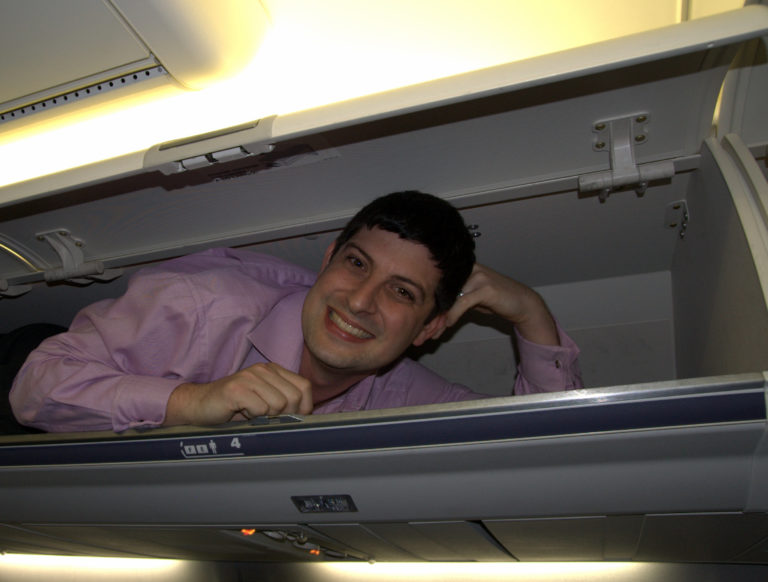As technology has advanced, so has the ability for flights to become longer and longer. For some of the longest long haul flights, depending on weather, climate conditions and airport traffic, you can expect to spend between about 16 and 19 hours in the air.
Chances are that most, if not all passengers will get at least some sleep while on flights that are that long (if you’re one of those people who has a hard time sleeping on planes, these ideas might help). The cabin crew will need to get some sleep, too. But did you ever wonder exactly where they sleep? I mean, it’s not like you see beds or cots in the cabin.
While perusing the internets, I think I discovered the ultimate answer.
The crew’s sleeping quarters may or may not be hidden. Depend on the plane, crew rest compartments could be a specially-made space above, below, in front of or behind where the passengers are sitting. They may be accessible through a hidden stairway or ladder. It could be bunk beds or singular spaces. On other planes, it could be designated seats in the cabin itself. They all have seat belts and passengers are not allowed to see them.
Oh, and pilots may or may not get better accommodations than the flight attendants, again, depending on a variety of reasons.
The video below gives a whole lot more info, along with pictures and videos of what the crews’ sleeping quarters can look like, how they figure out who gets to sleep when, and for how long.
Note – the video says it’s 8:55. It’s not. The good part actually ends right around 6:55 – the rest is a commercial. You’re welcome. 😉
(Note from Joe: I can’t watch this video and not think of the picture of Seth from Pax.ex.Aero lying in the overhead bin.)

Want to comment on this post? Great! Read this first to help ensure it gets approved.
Want to sponsor a post, write something for Your Mileage May Vary, or put ads on our site? Click here for more info.
Like this post? Please share it! We have plenty more just like it and would love it if you decided to hang around and sign up to get emailed notifications of when we post.
Whether you’ve read our articles before or this is the first time you’re stopping by, we’re really glad you’re here and hope you come back to visit again!
This post first appeared on Your Mileage May Vary
